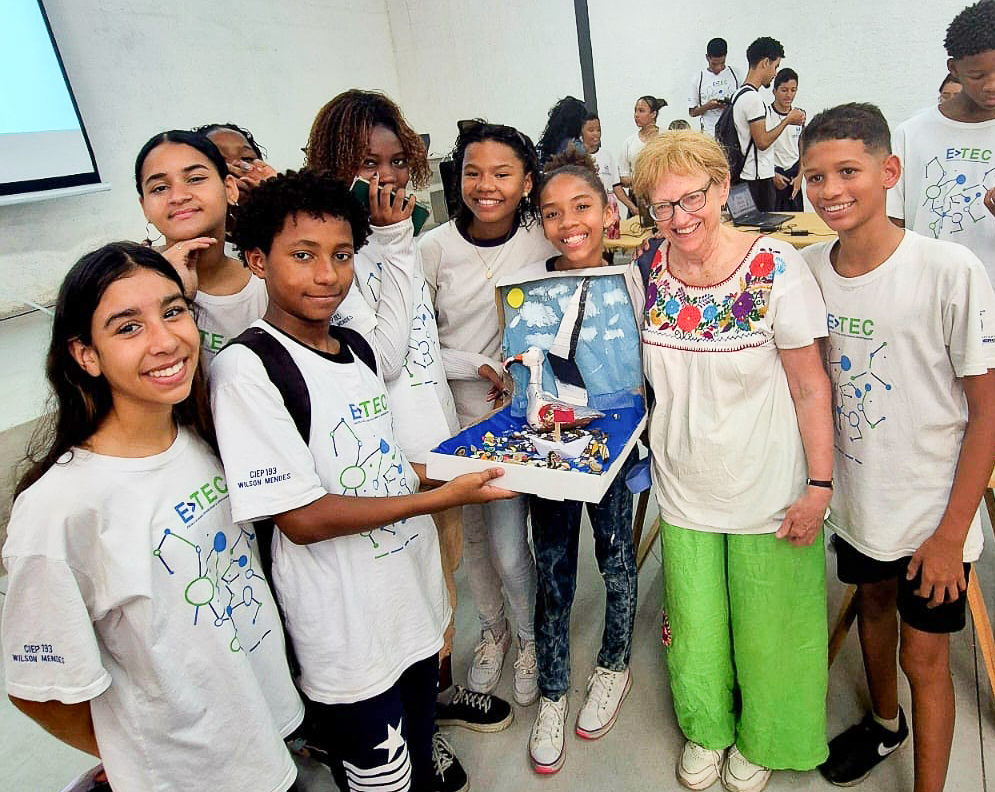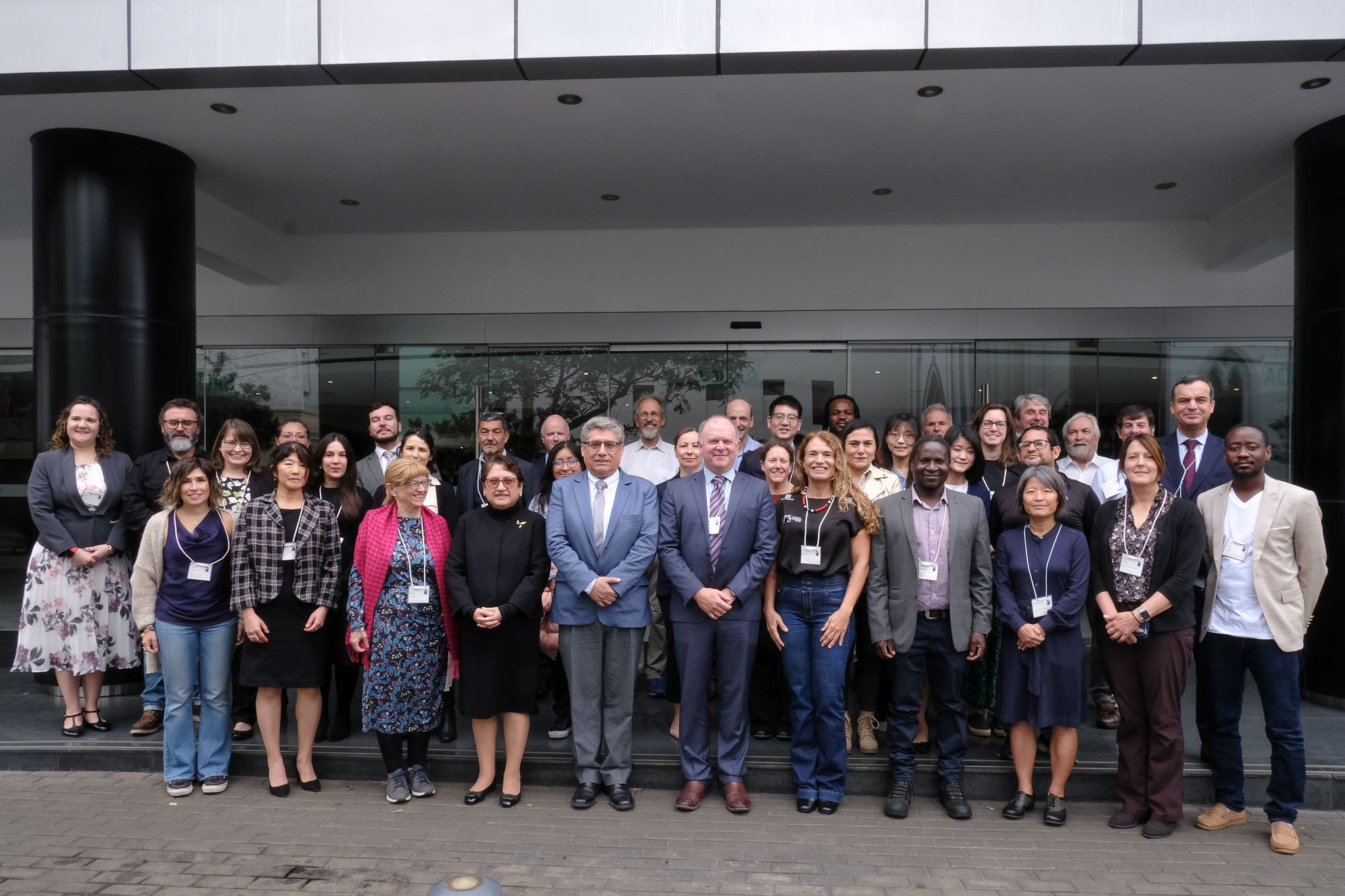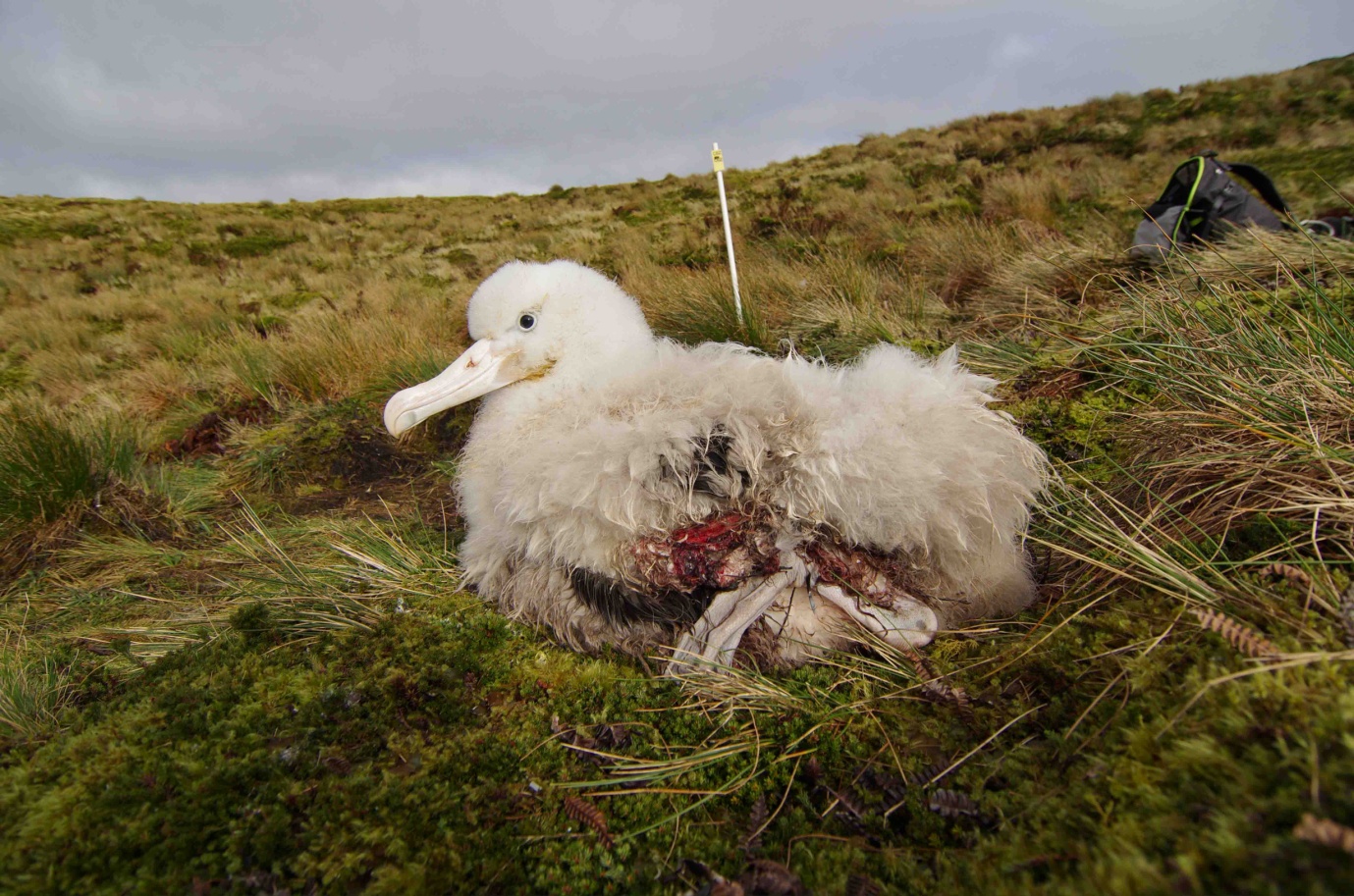 ACAP Executive Secretary Dr Christine Bogle meets with students visiting Projeto Albatroz's newly opened Marine Environmental Education and Visitation Centre in the coastal city of Cabo Frio
ACAP Executive Secretary Dr Christine Bogle meets with students visiting Projeto Albatroz's newly opened Marine Environmental Education and Visitation Centre in the coastal city of Cabo Frio
On her recent liaison visit to Brazil, ACAP Executive Secretary, Dr Christine Bogle was invited by Tatiana Neves, the CEO and Founder of the conservation NGO, Projeto Albatoz, to tour the organisation’s Marine Environmental Education and Visitation Centre.
The Centre, located in the coastal city of Cabo Frio, aims to share knowledge about albatrosses and petrels, create awareness of the marine environment in which they live and the threats they are facing.
Christine’s visit was the first from an intergovernmental organisation and was a highlight of her time in Brazil. During her visit to the Centre, she met with school students who presented their projects on various conservation issues, including the impact of plastic pollution on albatrosses.
The event was covered by local media outlet InterTV RJ, who were reporting on the importance of seabird conservation, the positive impacts of environmental education, and the significance of global efforts to protect albatrosses and petrels.
ACAP Executive Secretary Dr Christine Bogle and Projeto Albatross CEO Tatiana Neves interviewed by Brazilian media outlet InterTV RJ on her visit to Projeto Albatroz's Marine Environmental Education and Visitation Centre
“It was a pleasure to visit the new Centre established by Projeto Albatroz in Cabo Frio”, said Christine. “It is so important to create awareness of these magnificent seabirds and their marine environment, and the Centre demonstrates Projeto Albatroz’s dedication to conservation efforts.”
Tatiana, who is also Vice-chair of ACAP's Advisory Committee, highlighted that while international collaboration has been key to conservation efforts for albatrosses and petrels, it is also important to engage children and young people in conservation issues. "Through environmental education and ocean literacy, we empower young people to be part of the solution to this problem, amplifying the conservation message within their homes, schools and friends, so everyone can protect the oceans with us."
During her visit Christine also witnessed the release of two rehabilitated White-chinned Petrels Procellaria aequinoctialis, an ACAP-listed species, further illustrating the tangible impact of conservation efforts.
Christine’s visit to Brazil underscores the importance of international cooperation in maintaining a favourable conservation status for albatrosses and petrels, reinforcing the need for continued efforts across national and international boundaries.
2 October 2024

 English
English  Français
Français  Español
Español  A translocated Laysan Albatross egg gets a new owner, photograph by Hob Osterlund
A translocated Laysan Albatross egg gets a new owner, photograph by Hob Osterlund



 The problem: this Wandering Albatross chick has been attacked by Marion Island's introduced House Mice, photograph by Lucy Smyth, 22 May 2022, Read more at what is to be done at
The problem: this Wandering Albatross chick has been attacked by Marion Island's introduced House Mice, photograph by Lucy Smyth, 22 May 2022, Read more at what is to be done at 
 From left – right: João Luis Fernandino Ferreira - Specialized Technical Advisor from the Fisheries co-Management Department (DPES), Ministry of the Environment and Climate Change; Bráulio Ferreira de Souza Dias - Director of the Department of Conservation and Sustainable Use of Biodiversity (DCBIO), Ministry of the Environment and Climate Change;Tatiana Neves, Vice-chair of ACAP’s Advisory Committee and CEO and founder of the conservation NGO Projeto Albatroz; ACAP Executive Secretary, Dr Christine Bogle; Leandro Magalhães Silva de Sousa - Secretary. Deputy Head of Biodiversity Division, Ministry of Foreign Affairs; Krishna Barros Bonavides - Environmental Analyst from the Department of Conservation and Sustainable Use of Biodiversity (DCBIO), Ministry of the Environment and Climate Change;Inez Varoto Correa - Environmental Analyst from the Office of International Affairs, Ministry of the Environment and Climate Change; Gabriela Isa Rosendo Vieira Campos - Environmental Analyst from the Office of International Affairs, Ministry of the Environment and Climate Change; Pedro Ricardo Alexandre de Albuquerque - Environmental Analyst from the Fisheries co-Management Department (DPES), Ministry of the Environment and Climate Change
From left – right: João Luis Fernandino Ferreira - Specialized Technical Advisor from the Fisheries co-Management Department (DPES), Ministry of the Environment and Climate Change; Bráulio Ferreira de Souza Dias - Director of the Department of Conservation and Sustainable Use of Biodiversity (DCBIO), Ministry of the Environment and Climate Change;Tatiana Neves, Vice-chair of ACAP’s Advisory Committee and CEO and founder of the conservation NGO Projeto Albatroz; ACAP Executive Secretary, Dr Christine Bogle; Leandro Magalhães Silva de Sousa - Secretary. Deputy Head of Biodiversity Division, Ministry of Foreign Affairs; Krishna Barros Bonavides - Environmental Analyst from the Department of Conservation and Sustainable Use of Biodiversity (DCBIO), Ministry of the Environment and Climate Change;Inez Varoto Correa - Environmental Analyst from the Office of International Affairs, Ministry of the Environment and Climate Change; Gabriela Isa Rosendo Vieira Campos - Environmental Analyst from the Office of International Affairs, Ministry of the Environment and Climate Change; Pedro Ricardo Alexandre de Albuquerque - Environmental Analyst from the Fisheries co-Management Department (DPES), Ministry of the Environment and Climate Change